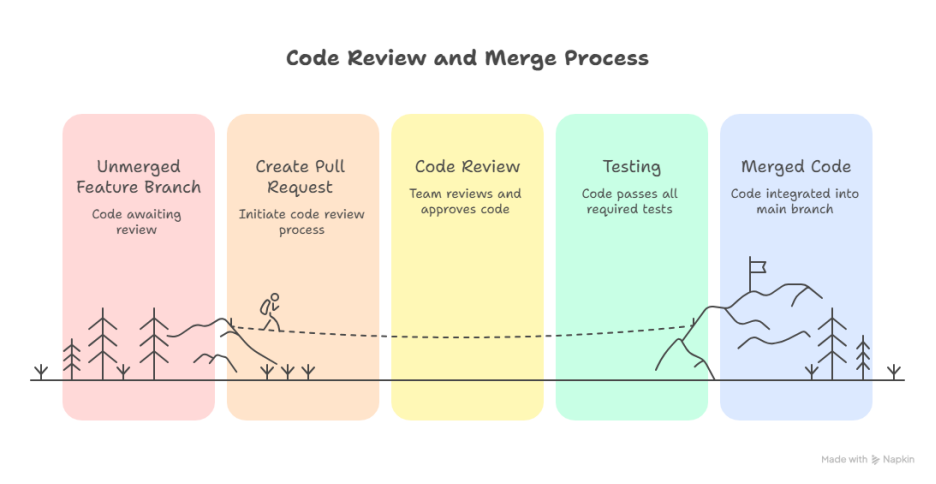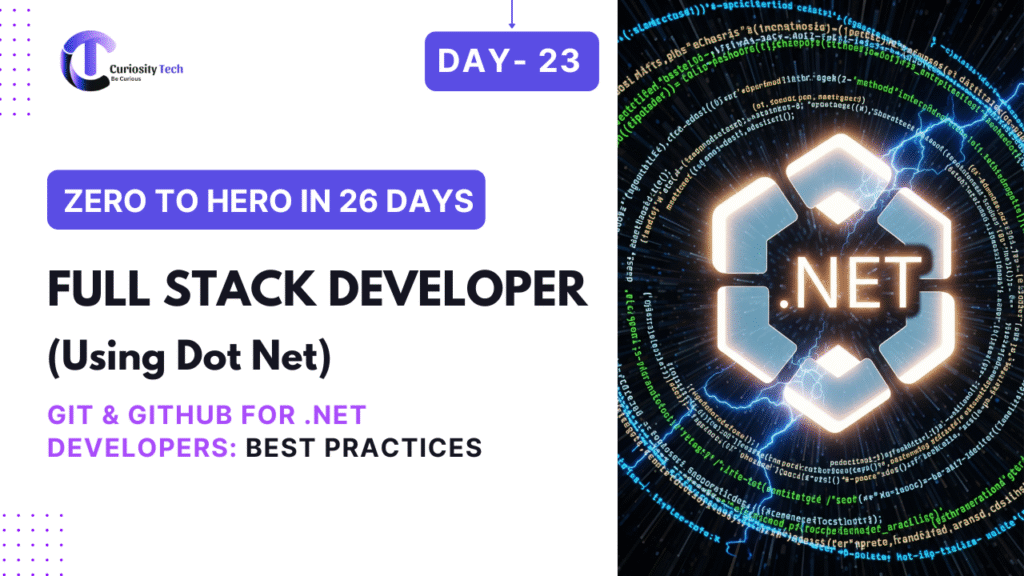Format: Tutorial + workflow diagrams + project examples + best practices
Introduction
Version control is a critical skill for FullStack .NET developers. Git, combined with GitHub, allows teams to collaborate efficiently, track code changes, and maintain a clean project history.
At CuriosityTech.in, learners gain hands-on experience using Git & GitHub for .NET projects, learning branching, pull requests, collaboration, and CI/CD integration.
1. Why Git & GitHub Matter
| Feature | Benefit |
| Version Control | Track code changes over time |
| Collaboration | Multiple developers can work together |
| Branching | Develop features independently without affecting main codebase |
| Pull Requests | Review code before merging |
| Integration | Connect with CI/CD pipelines for automation |
Diagram: Git Workflow

2. Setting Up Git for .NET Projects
Install Git:
git –version
Initialize Git in Project:
cd YourProjectFolder
git init
git add .
git commit -m “Initial commit”
Connect to GitHub Repository:
git remote add origin https://github.com/username/repo.git
git push -u origin main
3. Branching Strategies
Common Strategies for .NET Projects:
| Strategy | Description |
| Feature Branch | Develop new features in isolated branches |
| Develop Branch | Aggregate all features before production |
| Main/Master Branch | Stable production-ready code |
| Hotfix Branch | Emergency bug fixes directly from main |
Example Commands:
git checkout -b feature/job-portal-auth
git add .
git commit -m “Add JWT authentication”
git push origin feature/job-portal-auth
4. Pull Requests & Code Review
- Create pull request from feature branch to develop or main
- Team members review code, suggest improvements, or approve
- Merge only after passing tests and approvals
Pull Request Workflow Diagram:

5. Collaboration & Conflict Resolution
Common Commands:
# Fetch latest changes
git fetch
# Merge updates from main to your branch
git merge origin/main
# Resolve conflicts manually, then commit
git add .
git commit -m “Resolve merge conflicts”
Tips:
- Pull latest changes before starting new work
- Use meaningful commit messages
- Review conflicts carefully to avoid overwriting important code
6. Real-World Project: CuriosityTech Job Portal
- Scenario: Multiple developers working on Job Portal
- Implementation:
- Feature branches for frontend, backend, and database
- Pull requests for review and merge
- CI/CD pipeline integrated with Azure DevOps to deploy successful merges
- Benefits:
- Track all changes efficiently
- Maintain clean project history
- Ensure high-quality, production-ready code
7. Best Practices
- Commit small, logical changes frequently
- Use branch naming conventions: feature/login, bugfix/fix-auth
- Protect main branch with branch policies
- Enable CI/CD checks before merging
- Document workflows for team consistency
8. CuriosityTech.in Mentorship Insights
- Learn professional Git workflows for FullStack .NET projects
- Hands-on practice with branching, pull requests, code review, and CI/CD integration
- Prepares learners for collaborative enterprise development environments
Conclusion
Mastering Git & GitHub is essential for FullStack .NET developers. Proper version control and collaboration practices ensure clean, maintainable code, smooth teamwork, and seamless CI/CD integration. At CuriosityTech.in, learners gain practical experience applying these principles to real-world projects.
The next step is Day 24 – Latest .NET Full Stack Development Trends in 2025, exploring emerging technologies, frameworks, and practices.



